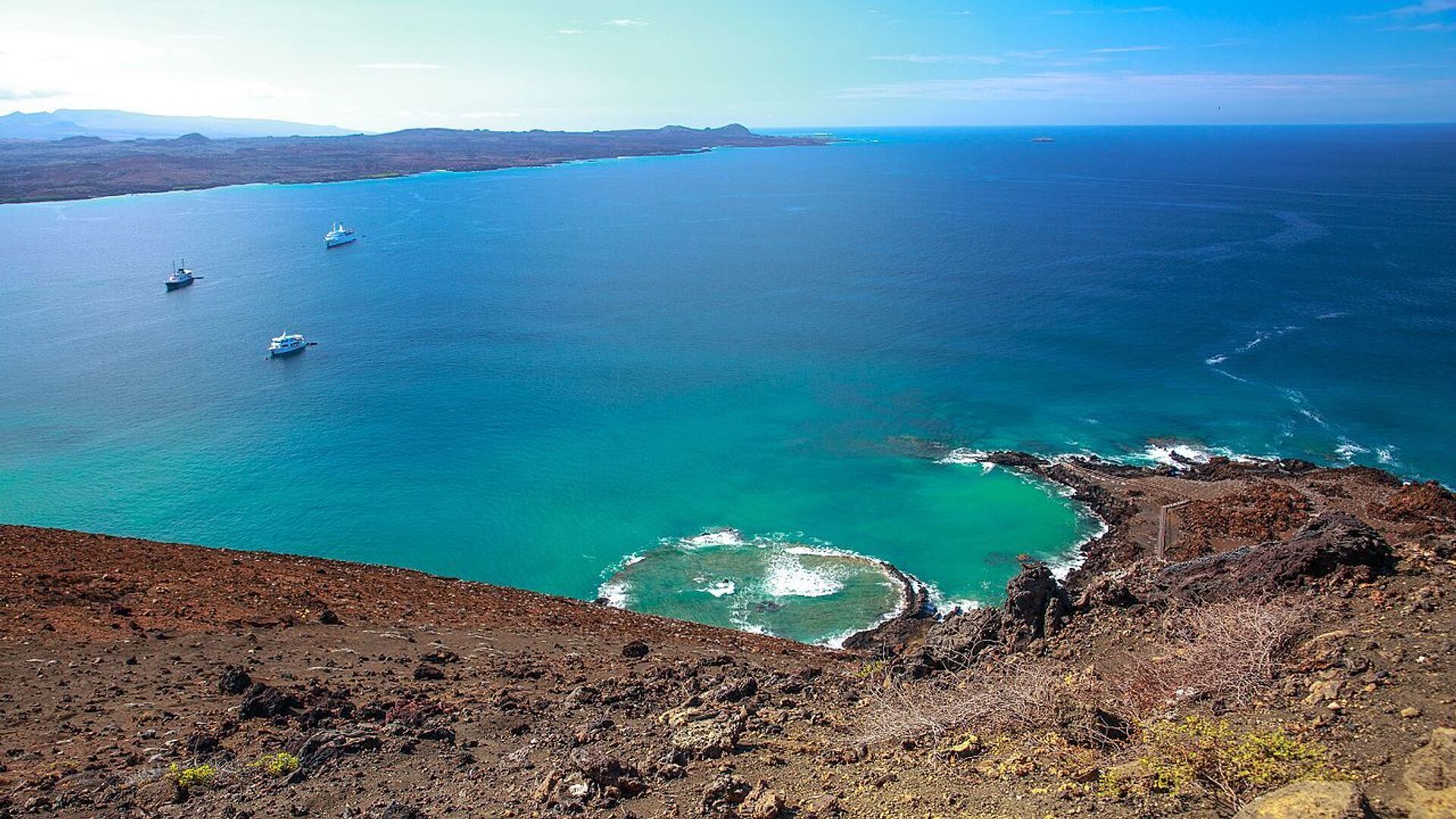https://sputnikglobe.com/20230418/scientists-discover-coral-reef-in-unmapped-galapagos-islands-territory-1109609656.html
Scientists Discover Coral Reef in Unmapped Galapagos Islands Territory
Scientists Discover Coral Reef in Unmapped Galapagos Islands Territory
Sputnik International
An ancient coral reef unaffected by human activity has been discovered in the Galapagos Islands, Woods Hole Oceanographic Institution reports.
2023-04-18T04:04+0000
2023-04-18T04:04+0000
2025-04-07T11:06+0000
ecuador
galapagos islands
coral reefs
nature
viral news
https://cdn1.img.sputnikglobe.com/img/07e4/07/1c/1080001680_0:67:1280:787_1920x0_80_0_0_c5c5a92477dd39329c13a21726adc4eb.jpg
Scientists recently revealed the discovery of a deep sea coral reef within the territory of the Galapagos Marine Reserve that has managed to maintain a healthy stretch of colonies.The finding marks the first time such objects have been found since the founding of the protected area in 1998. Officials have indicated that the reef lies at a depth between 400 and 600 meters in an area that had not been previously mapped.The discovery was made by the research submarine HOV Alvin, which recently underwent an upgrade and received 4K cameras and sampling equipment.Scientists also pointed out that the cleanliness of the reefs could serve as a great aid to studying the effects of global warming. As the reef is uncontaminated and untouched by industrial or other human activities, the data collected during the study is anticipated to demonstrate one-of-a-kind finds.Michelle Taylor, a co-leader with the expedition, has stated that officials also noticed a variety of animals living in the reef, such as "pink octopus, batfish, squat lobsters, and an array of deep-sea fish, sharks, and rays."Ecuadorian Minister of Environment Jose Antonio Dávalos called the discovery encouraging and promised to create new marine reserves.The Galapagos Islands are best known for their abundance of native fauna and Charles Darwin's research, which gave him the first incentive to create an evolutionary theory of the origin of species.
galapagos islands
Sputnik International
feedback@sputniknews.com
+74956456601
MIA „Rossiya Segodnya“
2023
News
en_EN
Sputnik International
feedback@sputniknews.com
+74956456601
MIA „Rossiya Segodnya“
Sputnik International
feedback@sputniknews.com
+74956456601
MIA „Rossiya Segodnya“
galapagos islands, coral reefs, woods hole oceanographic institution, ecuador marine reserve, ecuadorian minister of environment jose antonio davalos, latest marine discoveries, reefs expeditions
galapagos islands, coral reefs, woods hole oceanographic institution, ecuador marine reserve, ecuadorian minister of environment jose antonio davalos, latest marine discoveries, reefs expeditions
Scientists Discover Coral Reef in Unmapped Galapagos Islands Territory
04:04 GMT 18.04.2023 (Updated: 11:06 GMT 07.04.2025) The Galapagos Marine Reserve was first established in 1998 and is considered to be one of the most diverse marine protected areas in the world, as well as one of the largest.
Scientists recently revealed the discovery of a deep sea coral reef within the territory of the Galapagos Marine Reserve that has managed to maintain a healthy stretch of colonies.
The finding marks the first time such objects have been found since the founding of the protected area in 1998. Officials have indicated that the reef lies at a depth between 400 and 600 meters in an area that had not been previously mapped.
The discovery was made by the research submarine HOV Alvin, which recently underwent an upgrade and received 4K cameras and sampling equipment.
"Exploring, mapping and sampling the Galápagos Platform with Alvin and Atlantis represents an opportunity to apply 21st-century deep-submergence and seafloor mapping technologies and innovative deep-sea imaging techniques to reveal the beauty and complexity of the volcanic and biological processes that makes the Galápagos so unique," notes Dr. Daniel J. Fornari, co-lead of the expedition, marine geologist, and Emeritus Research Scholar at the Woods Hole Oceanographic Institution.
Scientists also pointed out that the cleanliness of the reefs could serve as a great aid to studying the effects of global warming. As the reef is uncontaminated and untouched by industrial or other human activities, the data collected during the study is anticipated to demonstrate one-of-a-kind finds.
Michelle Taylor, a co-leader with the expedition, has stated that officials also noticed a variety of animals living in the reef, such as "pink octopus, batfish, squat lobsters, and an array of deep-sea fish, sharks, and rays."
Ecuadorian Minister of Environment Jose Antonio Dávalos called the discovery encouraging and promised to create new marine reserves.
The Galapagos Islands are best known for their abundance of native fauna and Charles Darwin's research, which gave him the first incentive to create an evolutionary theory of the origin of species.

